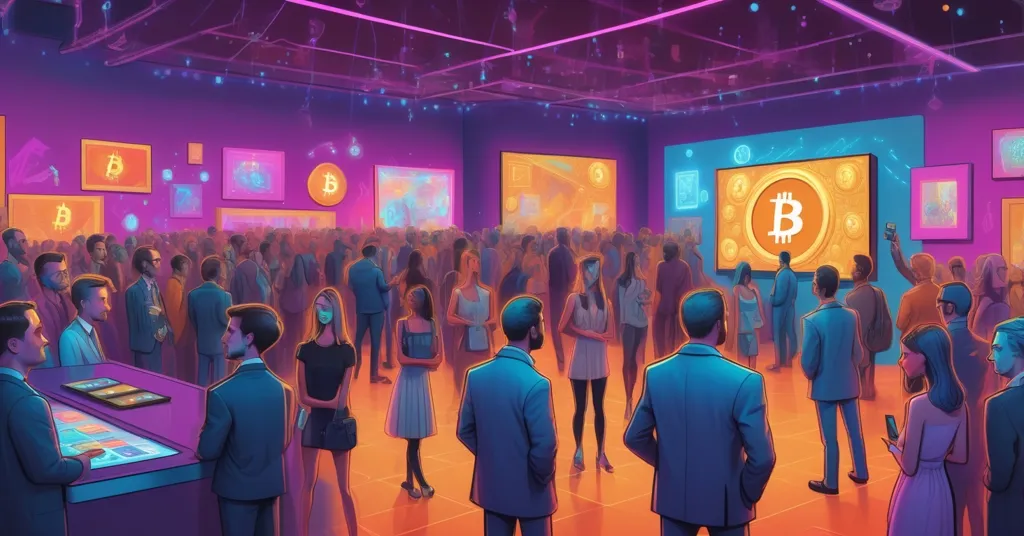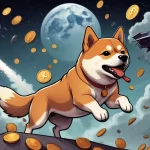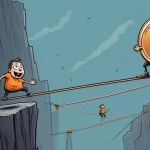Artprice 2025 Report: Record Art Deals, AI Disruption, and Crypto’s Market Takeover

Artprice’s 2025 Report: Record Transactions, AI Disruption, and Crypto’s Art Market Power Grab
Right on the heels of major art events like Frieze London and Art Basel Paris, Artprice by Artmarket has dropped its 31st Contemporary Art Market Annual Report for 2025, and it’s packed with revelations. From record-breaking auction transactions to the explosive rise of AI-generated art and cryptocurrency transactions, this report lays bare a market caught between old-world elitism and a tech-fueled future.
- Transaction Surge: Record auction numbers despite a 25% global turnover drop.
- Tech Takeover: AI art and Bitcoin/Ethereum payments are rewriting the rules.
- Paris on Top: Outshining London and New York as the transaction hub.
A Market in Flux: Record Deals Amid Economic Strain
The global art auction landscape is a paradox in 2025. We’re witnessing an unprecedented spike in transactions within the Contemporary and Ultra-Contemporary segments, a clear sign of vibrant activity. Yet, the total turnover has plummeted by a shocking 25% in just one year. High-end markets in traditional strongholds like Hong Kong, London, and New York are hitting the brakes hard—six-figure auction results are drying up, and Hong Kong’s turnover is half of its decade-long average. It’s a gut punch to the premium segment, where deep-pocketed buyers seem to be playing it safe amid economic uncertainty.
But here’s the flip side: Paris is stealing the spotlight. Surpassing both London and New York, it’s become the most dynamic capital for transaction volume. This isn’t just a blip—it signals a shift in where the action is happening, with Paris emerging as a magnet for deals big and small. While the old guard struggles, this rise hints at a broader transformation in buyer behavior and market access, setting the stage for the real game-changers: technology and democratization. For more insights on this shift, check out the latest Artprice updates ahead of Frieze London and Art Basel Paris.
Affordable Art Boom: Breaking Down the Elitist Walls
One of the most striking trends is the explosion of interest in affordable art. Works priced under $5,000, and even under $1,000, are seeing what Artprice CEO Thierry Ehrmann calls a “tsunami of interest.” Fueled by online sales platforms, this segment caters to a younger, digital-savvy crowd looking to own a piece of culture without needing a trust fund. It’s a middle finger to the stuffy, exclusive art world of yesteryear, making collecting accessible to the masses.
This isn’t just about price tags, though. There’s a cultural tidal wave happening too. Female artists are shattering records and upending longstanding hierarchies, proving the market isn’t just a boys’ club anymore. Meanwhile, one in five artists hitting the auction scene last year was brand new, with many under 40, signaling a fresh wave of talent. Add to that emerging art scenes—Japan, for instance, is gaining traction beyond heavyweights like Takashi Murakami and Yoshitomo Nara—and you’ve got a market reinventing itself with raw energy and diversity.
AI’s Art Revolution: Creativity or Chaos?
Let’s talk tech, because artificial intelligence isn’t just a buzzword in 2025—it’s a damn disruptor. AI-generated art is turning heads, with standout sales like Ai-Da Robot’s “A.I. God. Portrait of Alan Turing” pulling in $1.1 million at Sotheby’s New York on July 11, 2024. For the uninitiated, Ai-Da is a robotic artist, blending code and canvas in ways that both awe and unnerve. This isn’t a one-off; Artprice predicts billions of generative AI creators will swarm the market, with millions meaningfully boosting its volume.
What’s driving this? Tools like high-resolution screens and AI prompts—think typing a few words to create a surreal masterpiece—are slashing the barriers to entry for digital art. Artprice is all in on this shift, rolling out proprietary tools like Intuitive Artmarket® and teaming up with Perplexity AI to redefine market analysis. But before we crown AI the savior of art, let’s pump the brakes. There’s a real risk of saturation—when everyone’s an “artist” with a prompt, does uniqueness even matter? And what about the soul of art? Critics argue AI pieces lack the human grit of a brushstroke, a debate that’s only heating up as prices climb. This tech is a double-edged sword, promising innovation but threatening to drown us in generic output.
Bitcoin and Ethereum in Art Deals: Decentralized Disruption
Cryptocurrency is no longer a side hustle in the art world—it’s muscling in as a major player. Since 2010, Artprice has quoted its extensive databases in Bitcoin and Ethereum, and usage has skyrocketed from 2% to 36% of consultations. This isn’t random; it’s tapping into a new breed of buyer—young tech millionaires, often computer scientists aged 25 to 40, who’ve built fortunes in BTC and ETH. As Thierry Ehrmann notes, these aren’t your grandpa’s collectors chasing a dusty Picasso. They’re after social clout through digital art that mirrors their wired-up lives.
“Affordable artworks are experiencing a tsunami of interest. Indeed, this interest prompted us to meet with senior executives of the main global auction houses in NY and Beijing to discuss ways of promoting artworks priced between $5,000 and $15,000 and open up to sales in cryptocurrencies, now conducted mainly by ETFs since 2024, after the United States approved the Bitcoin spot ETF as well as the Ethereum spot ETF.” – Thierry Ehrmann, CEO of Artmarket.com and Founder of Artprice
“Today, this means that the 300 new millionaire art collectors are mostly young computer scientists between 25 and 40 years old who own Bitcoin and Ethereum. These new art buyers are seeking a form of social recognition that they find in the purchase of art, and particularly in digital artworks with the emergence of AI, which represents a genuine paradigm shift in art.” – Thierry Ehrmann
Why does crypto matter here? It’s pure decentralization—a way to buy art without kissing the ring of banks or auction houses that pile on fees and bureaucracy. Bitcoin offers unmatched trust and security as sound money, while Ethereum’s smart contracts (self-executing digital agreements on the blockchain) can automate sales and prove ownership of digital works through NFTs, or non-fungible tokens. Picture a vending machine: insert the right coins, and the soda drops—no cashier needed. That’s how smart contracts ensure an artist gets paid instantly, cutting out the middleman. Artprice is pushing this hard, negotiating with major auction houses in New York and Beijing to promote artworks between $5,000 and $15,000 via crypto, a move boosted by the U.S. approval of Bitcoin and Ethereum spot ETFs in 2024. These exchange-traded funds, offered by giants like BlackRock and Fidelity, let normies invest in crypto without owning coins directly, widening the buyer pool.
But let’s not sip the Kool-Aid just yet. Crypto’s wild price swings can turn a smart buy into a painful loss if Bitcoin craters overnight. And the scams? They’re everywhere—fake NFT drops and rug-pull schemes are fleecing naive buyers left and right. We’ve got no tolerance for these grifters. Our mission is adoption and education, not hype or shilling. Bitcoin remains king for reliability, but Ethereum’s flexibility with NFTs and even smaller chains like Solana or Tezos—offering cheap fees for artists minting digital works—fill gaps BTC doesn’t touch. They’re not the core of this financial revolution, but they’ve got roles in niche art platforms, and we’re not too stubborn to admit it.
Blockchain’s Promise: Provenance and Power to the Artist
Beyond payments, blockchain tech itself is a game-changer for art. One of the oldest headaches in this market is provenance—proving who owns what and whether a piece is legit. Fakes and forgeries have plagued galleries for centuries, but blockchain offers a tamper-proof ledger. Every sale, every owner, etched in digital stone. Ethereum’s smart contracts and NFTs take this further, letting artists sell directly to fans without auction houses skimming off the top. It’s freedom in action, aligning with our push for privacy and cutting out centralized overlords.
Look at platforms like OpenSea, where NFT sales exploded (and sometimes imploded) in recent years. Artists can mint a digital piece for peanuts on chains like Solana, reaching global buyers instantly. Compare that to traditional art fraud scandals—think forged Van Goghs slipping through the cracks—and blockchain’s transparency is a breath of fresh air. Still, it’s not perfect. The 2022 NFT bubble showed how hype can outpace value, with projects crashing as fast as they soared. And regulatory hurdles like KYC (know your customer) laws could stifle crypto deals if governments clamp down. This tech empowers, but it’s a wild west out there.
The Dark Side: Risks in a Tech-Driven Market
While the hype around AI and crypto in art is electric, the cracks are showing. The premium market’s slowdown is a loud warning—high-end buyers in the U.S., China, and the UK, which still hold over 75% of global turnover, are pulling back. Paris might be the new hotshot for transactions, but if the global economy keeps stuttering, can it hold the crown? Then there’s AI’s looming shadow. Billions of generative creators sound thrilling until the market’s flooded with cookie-cutter digital junk. Already, forums buzz with debates over whether AI art has any “soul” compared to human struggle on canvas. It’s a cultural clash we can’t ignore.
Crypto’s risks hit even harder. Beyond price volatility, the space is a magnet for scammers peddling fake art drops or inflated valuations. We’re not here for the moonboys promising $1 million Bitcoin by next Tuesday—those clowns can take a hike. And let’s not forget Artprice’s own historical heft; their manuscript collection, dating back to 1700 and valued at 43 million euros in January 2025, reminds us that data matters. Could blockchain archive this kind of history better? Maybe, but only if we dodge the pitfalls of tech overpromise.
Artprice News: Keeping the Pulse Alive
Amid all this upheaval, Artprice isn’t just reporting—they’re shaping the narrative. Their new venture, Artprice News, launched with Cision PR Newswire, pumps out daily global art market updates across 122 countries in 11 languages. It’s a bold play to keep the conversation raw and real, especially as tech and affordability redraw the lines. For a market teetering between chaos and opportunity, having a finger on the pulse is everything.
Key Takeaways and Questions on Crypto, AI, and the Art Market
- What’s behind the record art auction transactions in 2025?
A boom in affordable art under $5,000, online platforms, and a young, digital-native buyer base are driving unprecedented deal volumes. - How is AI transforming the art and blockchain space?
AI enables digital art creation with simple prompts, predicts billions of new creators, and fetches big sales like Ai-Da Robot’s $1.1 million piece, though risks of oversaturation loom large. - Why are Bitcoin and Ethereum crucial for art transactions?
They attract young millionaire collectors, enable decentralized payments, and have boosted Artprice database queries from 2% to 36%, embodying freedom from traditional financial gatekeepers. - What challenges does the premium art market face despite Paris’ rise?
High-end segments are faltering in hubs like New York and Hong Kong with declining turnover, and global economic woes could threaten Paris’ newfound dominance in transaction volume. - Can blockchain and crypto ensure fairness in the art world?
Blockchain offers transparency for ownership and direct artist sales via NFTs, but scams, volatility, and regulatory pressures remain serious hurdles to a truly equitable market.
So, where does this leave us? The art market of 2025 is a messy, thrilling frontier—old money’s grip is slipping, and tech is prying the door open for the rest of us. Whether you’re a Bitcoin HODLer eyeing a digital masterpiece or a skeptic waiting for the NFT bubble to burst again, one thing’s clear: this revolution isn’t waiting for permission. Will AI and crypto truly liberate art, or just swap one set of chains for another? My Dogecoin wallet from 2017 says I’ve bet wrong before, but this time, I’m all in on disruption. Let’s see who’s left standing.


